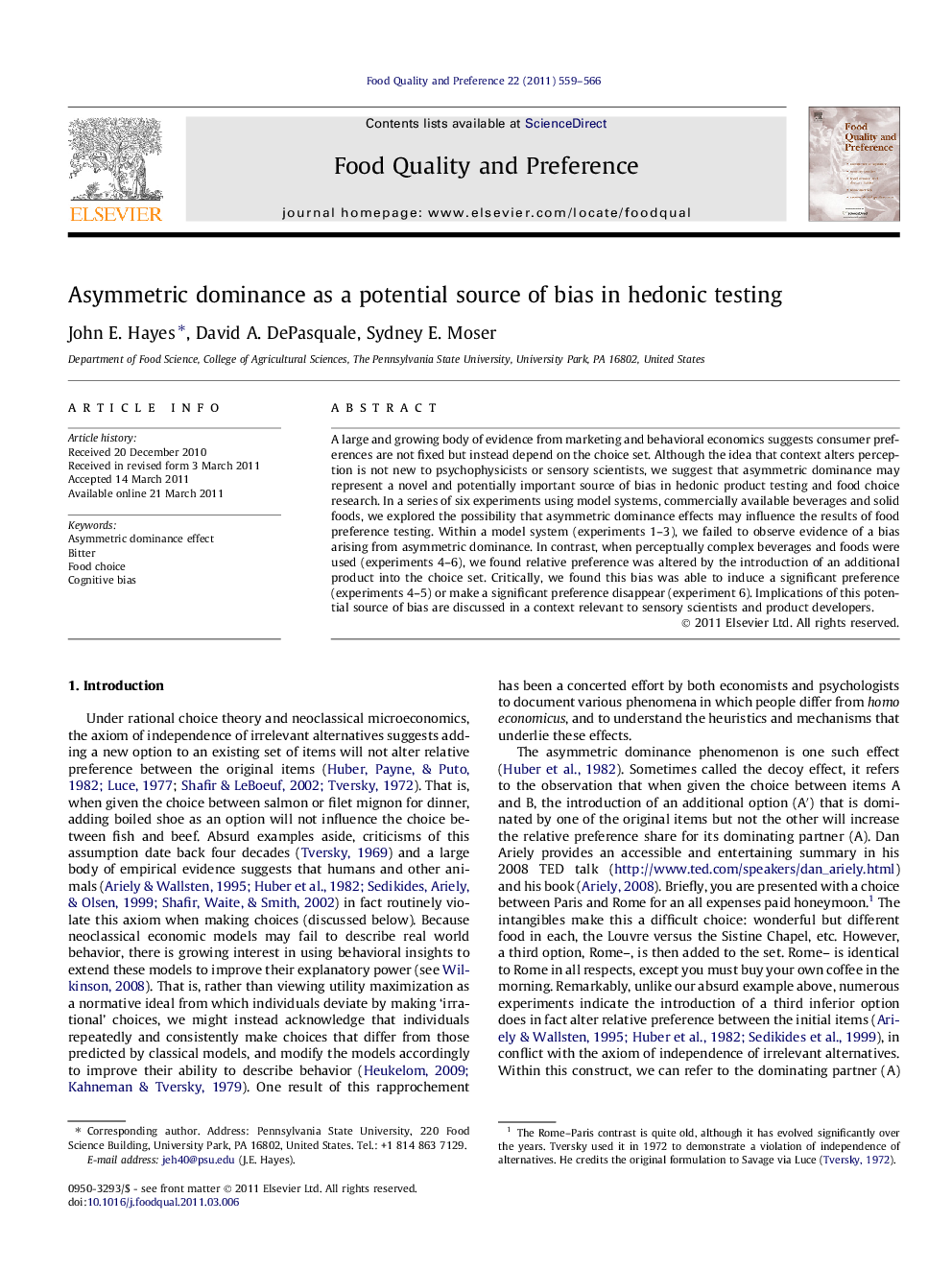| Article ID | Journal | Published Year | Pages | File Type |
|---|---|---|---|---|
| 4317718 | Food Quality and Preference | 2011 | 8 Pages |
A large and growing body of evidence from marketing and behavioral economics suggests consumer preferences are not fixed but instead depend on the choice set. Although the idea that context alters perception is not new to psychophysicists or sensory scientists, we suggest that asymmetric dominance may represent a novel and potentially important source of bias in hedonic product testing and food choice research. In a series of six experiments using model systems, commercially available beverages and solid foods, we explored the possibility that asymmetric dominance effects may influence the results of food preference testing. Within a model system (experiments 1–3), we failed to observe evidence of a bias arising from asymmetric dominance. In contrast, when perceptually complex beverages and foods were used (experiments 4–6), we found relative preference was altered by the introduction of an additional product into the choice set. Critically, we found this bias was able to induce a significant preference (experiments 4–5) or make a significant preference disappear (experiment 6). Implications of this potential source of bias are discussed in a context relevant to sensory scientists and product developers.
► We explore asymmetric dominance effects as a novel source of bias in product testing. ► Effects occurred in perceptually complex foods and beverages but not model systems. ► Asymmetric dominance effects both induced and obfuscated significant preferences.
